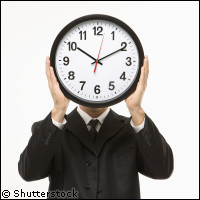Skin cells shed light on workings of human body clock
Whether a person is an early or a late riser is encoded in the genes of his or her skin cells. Researchers on the EU-funded EUCLOCK (Entrainment of the circadian clock) project have now found that an analysis of these cells can reveal the person's chronotype. Some 28 test subjects participated in the study, which has now been published online by the journal Proceedings of the National Academy of Sciences (PNAS). A questionnaire (the Horne-Ostberg Chronotype Questionnaire (HOQ)) asking about preferred waking time and sleeping times, alertness at different times of day and vacation habits helped to determine the test subjects' chronotype, identifying 11 of them as 'larks' (early risers) and 17 as 'owls' (late risers). The scientists took fibroblast (main cells of the connective tissue) samples from all of them and inserted a bioluminescent gene into the cells with the help of a virus. It was then possible to measure the degree of luminescence, as the cells glowed more or less intensely depending on the circadian phase. The human circadian (from the Latin 'circa diem' meaning 'about a day') oscillator regulates a person's sleep-wake cycles and cognitive performance, cardiac function (heartbeat and blood pressure), renal function and most aspects of digestion. According to the measurements, the circadian period in extreme larks is shorter, while people who are late risers exhibit longer circadian periods. However, the circadian period is not solely determined by length. Other factors such as the amplitude of the expression level of the clock gene play a role too, a mathematical model suggests. Ultimately, these findings might help to develop clinical screening methods. This would allow patients of extreme chronotype, suffering from Advanced or Delayed Sleep Phase Syndrome, to receive adequate treatment without having to stay in sleep laboratories for prolonged periods of time, comments the study's lead author Dr Stephan Brown of the University of Zurich. The EUCLOCK project brings together 29 partners from 10 countries inside and outside of the EU. It receives more than €12 million in funding under the Sixth Framework Programme (FP6).



